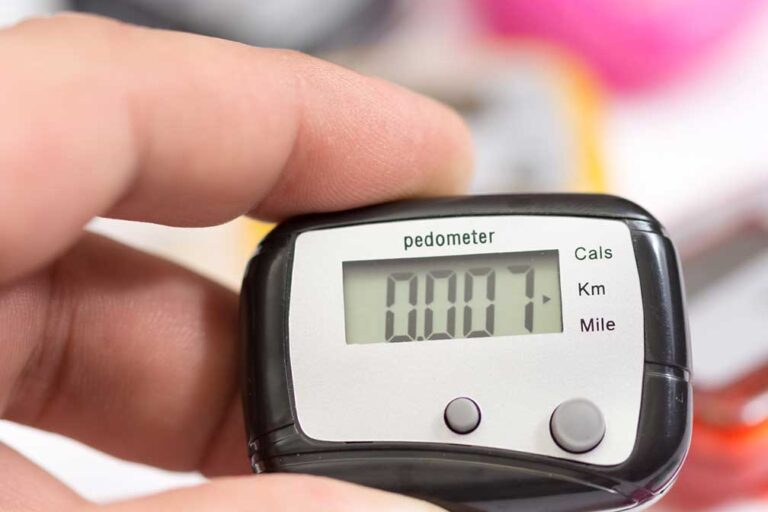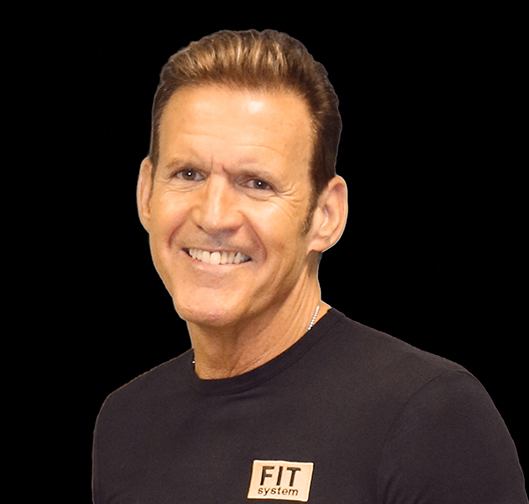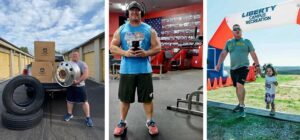It’s common knowledge that exercising is beneficial to your health. In some cases, it can even save a person’s life.
So, why isn’t everyone exercising?
Making major life changes isn’t an easy task — and taking control of one’s personal health is no exception. It can be overwhelming and difficult, especially while working and living on the road.
In my role, I visit with a lot of drivers who are struggling to become fit and healthy enough to maintain their DOT medical certification. When the discussion turns to establishing a regular health and fitness routine, many people say it’s simply not possible. The reasons for not attempting a program (or failing at one) vary from person to person.
I’m here to tell you: With a support system, a solid plan and realistic goals, you can put yourself on the road to better health.
I often advise drivers, “it’s not the exercise you SHOULD do, but the one you WILL do.” In other words, set realistic goals, and build from there. The same adage could apply to your diet. What you put in your body is 75% of the battle. While exercise is very important, making good nutritional choices is the key.
Choose the right protein.
To get the maximum performance out of your body’s “engine,” you need to know what “fuel” is best for you. The best way to figure this out is to use the most reliable and valuable “lab”: your own body.
Take protein, for example.
Protein is the building block of every cell in your body and should be the foundation of every meal. Protein comes in all shapes, sizes, and flavors — chicken, turkey, lean cuts of meat, cheese, fish, eggs, beans, nuts and cottage cheese, just to name a few.
A common complaint I hear from people making lifestyle changes is that they are always hungry.
It’s true that eating a low-fat menu can leave you wanting more — but you don’t have to eat the kitchen sink or return to your old habits to feel satisfied. By including a little lean protein with each meal, you can feel full longer.
However, you need to understand how much protein is enough. Here’s a good rule to follow: Generally, the size of your fist is equal to a healthy portion size.
Be aware that not all protein sources agree with everyone. This is where you need to experiment with your body’s “lab” to find the right protein for you. It takes your body longer to digest protein than some other foods, so it stays with you longer (much like whole grains.) Incorporating the right type and amount of protein into your meals can help you stick to a low-fat diet — and in turn, help you lose weight (without losing your mind!).
It’s essential to start the day with a good source of protein. We all know living and working on the road can make finding healthy options especially challenging. If you don’t always have time in the morning to eat a good breakfast, be prepared. Stock your cab with some healthy staples as a backup. Remember, if you don’t have a good choice available you will make a bad choice. A few good protein options to pack include protein bars and/or shakes, fruit with almonds and walnuts, or Greek yogurt with oatmeal All of these are good sources of protein for on the run.
You need to do your homework and read the labels to make sure you are not overloading on sugar and carbs to get the protein. This is where you learn to listen to your body.
Choose the right activity.
Now that we better understand how to fuel our personal engines let’s put it to the test by starting a simple exercise program.
Despite all the scientific advances in sports training and the billions of dollars spent on exercise equipment each year, the best, most readily available form of exercise is free — walking.
I suggest starting with a goal of walking 2,500 steps each day. That’s approximately 1 mile, and you’ll burn about 100 calories. Seems simple, doesn’t it? You don’t even have to do it all at once; you can make the steps in small increments throughout the day.
If you’re out of shape, it’s likely that you didn’t get that way overnight. Your road to health won’t happen overnight, either. Start slowly and build up over time. Exercise shouldn’t be a chore. It’s one of the best things you can do for your body.
Walking provides numerous benefits. It can:
- Increase circulation;
- Relax tension in your neck and shoulders;
- Relieve lower back pain and hip stiffness; and
- Ease mental fatigue and eye strain.
When planning any sort of fitness routine, there are a few rules of thumb to follow.
- Wear good shoes.
You don’t run your rig on bad tires — don’t work out in worn-out shoes! A shoe’s arch support, heel support and cushioning all wear down over time. Good walking shoes help you avoid injuries.
When shopping for a new pair of shoes, take your old workout shoes with you to the store. A good salesperson can look at the wear on the sole of the shoes and recommend any necessary adjustments in size or style.
- If you have a pedometer, take it for a road test.
Attach the pedometer horizontally on your waistband or belt, centered above your knee on one side (in other words, don’t stick it under your belly button or way off to one side). If this is not comfortable, the pedometer may be worn at the side, but accuracy may be affected. Be sure to keep the device horizontal.
To test for accuracy, set the counter to zero and walk 50 steps. If the counter reads between 45 and 55 steps, it’s functioning accurately. If the reading is off by more than 10%, reposition the counter to another location on your waist and re-test.
- Set realistic goals for strength training.
As you build stamina, you may want to incorporate a strength-training program into your regular workout routine to help increase muscle strength and flexibility. Start small and work your way up. As I said before, finding an exercise you WILL do can be more effective than looking at one you SHOULD do and thinking, “That’s just too much for me.”
- Drink to your health.
As you increase physical activity, be sure to stay well hydrated. Drinking water is one of the keys to good health, and it’s even more important when you exercise.
Known as The Trucker Trainer, Bob Perry has played a critical role in the paradigm shift of regulatory agencies, private and public sector entities, and consumers to understand the driver health challenge. Perry can be reached at [email protected].
Bob Perry is a regular contributor to The Trucker. He has spent nearly the past four decades on a mission to educate professional drivers and share life-changing products and services to help them live healthier lives while on the road. Recognized throughout the transportation industry, from bus drivers to over-the-road professional drivers, Perry has played an important role in creating a paradigm shift helping regulatory agencies, private and public sector entities, and consumers understand the current health challenges of the professional driver. He has participated as a wellness advocate in several roundtable discussions, large audience groups and small forums as well as going “curbside” through a national truck stop tour.
Bob’s articles have been featured in The Trucker and a number of other national transportation industry publications and is the host of a weekly wellness call produced by Rolling Strong. Bob has been a regular guest on RedEye Radio and Land-Line Radio, and is often an invited guest on Sirius radio shows. He has been featured in the New York Times, Men’s Health Magazine, Drug Store News, American Road Magazine, WSJ, NPR, ABC National Radio, as well as hundreds of daily newspapers. He has appeared on television news shows across the nation, including a featured TV segment on ABC NightLine News.












